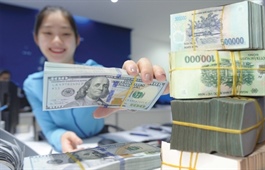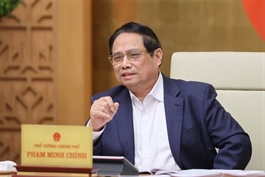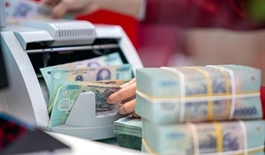Vietnamese banking sector a rising ASEAN dragon
Vietnamese banking sector a rising ASEAN dragon
The Vietnamese banking sector is currently defined by a dynamic of cautious optimism. The State Bank of Vietnam has set a high credit growth target of approximately 16 per cent, a figure that stands out in the region and reflects the strong demand for capital from the nation’s burgeoning manufacturing, trade, and recovering real estate sectors.

Samir Dixit, global head Acorn Management Consulting |
This drive for growth is complemented by improving profitability metrics, with analysts forecasting a healthy return on assets of around 1.55-1.60 per cent, buoyed by an expanding net interest margin. However, this aggressive expansion is not without its challenges, primarily the persistent concerns over asset quality linked to real estate exposure and liquidity pressures affecting smaller institutions.
When compared to its ASEAN peers, Vietnam presents a compelling story of a high-growth contender rapidly closing the gap. While its total asset size is smaller than the banking giants in Singapore, Indonesia, and Malaysia, its growth trajectory is significantly steeper.
The recent introduction of a regulatory sandbox for fintech signals a proactive approach, while strategically raising foreign ownership limits in certain banks will attract overseas capital and expertise to fortify the sector.
In the next five years, the Vietnamese banking sector is expected to enter a phase of consolidation and deeper integration. The focus will likely pivot from sheer credit volume to enhancing the quality of loan portfolios and strengthening risk management frameworks to align more closely with international standards.
By 2030, Vietnam’s banks will possess larger balance sheets and a greater regional presence, though they will face intense competition from the tech-first financial institutions of Singapore and Indonesia.
The future ASEAN financial landscape will be multipolar; while Singapore will likely retain its edge in wealth management, the sheer domestic market scale of Indonesia and Vietnam will make their banks major forces. Success will ultimately depend on building a resilient and innovative financial ecosystem.
While the primary challenge remains that of management of non-performing loans (NPLs), which are an inherent risk in any rapidly expanding credit environment, to secure a promising future, Vietnam must address its key vulnerabilities by drawing lessons from international experience, particularly from its ASEAN neighbours.
Vietnam could learn from Malaysia’s response to the 1997 Asian financial crisis, where the government established a dedicated national asset management company, Danaharta, to acquire and rehabilitate bad loans, thereby cleaning up bank balance sheets and restoring confidence.
A similar, well-capitalised and transparent entity in Vietnam could accelerate the resolution of legacy NPLs and assets tied to the troubled real estate sector, allowing banks to focus on productive new lending.
In contrast, Singapore’s model, overseen by the Monetary Authority of Singapore, emphasises prevention through stringent regulatory oversight, rigorous stress testing, and early warning systems that identify and address risks before they become systemic.
As Vietnam mandates biometric authentication for high-value online transactions, it must build a secure and seamless digital identity infrastructure. While this is a positive step towards enhancing security, a fragmented approach by individual banks can create inefficiencies.
Singapore provides a powerful example with its national digital identity, Singpass, which is deeply integrated with the financial sector. It provides a single, highly secure, and convenient method for citizens to access services across government agencies and private sector companies, including banks. By developing a similar national-level, state-backed digital identity system, Vietnam could significantly bolster security, reduce fraud, and streamline the customer experience, fostering greater trust in its digital economy.
Singapore offers a unique alternative approach and learning which Vietnam can explore. Instead of targeting interest rates, the MAS centres its monetary policy on managing the exchange rate. It guides the Singapore dollar against a trade-weighted basket of currencies, allowing it to strengthen or weaken within a policy band to counter imported inflation and ensure price stability.
While Vietnam’s economy is not structured to adopt this exact model today, the principle of using the exchange rate as a more direct anchor for stability in a trade-reliant economy offers valuable long-term lessons.
To sustain momentum in the digital arena, Vietnamese banks must deepen their collaboration with the nation’s vibrant fintech ecosystem. Rather than attempting to innovate in isolation, they should form strategic partnerships to leverage agility and technological expertise. This includes integrating popular e-wallets into their core platforms and using fintech-developed AI for more sophisticated credit scoring, especially for the underserved micro-lending market.
Additionally, as Vietnamese corporations expand, their banking partners must follow. A sophisticated cross-border strategy is essential, focusing on forming tie-ups with Singapore’s financial sector to access capital markets and wealth management expertise, while also pursuing alliances with Indonesian institutions to tap into ASEAN’s largest consumer market in trade finance, and servicing the burgeoning digital economy.
- 12:12 07/07/2025
























